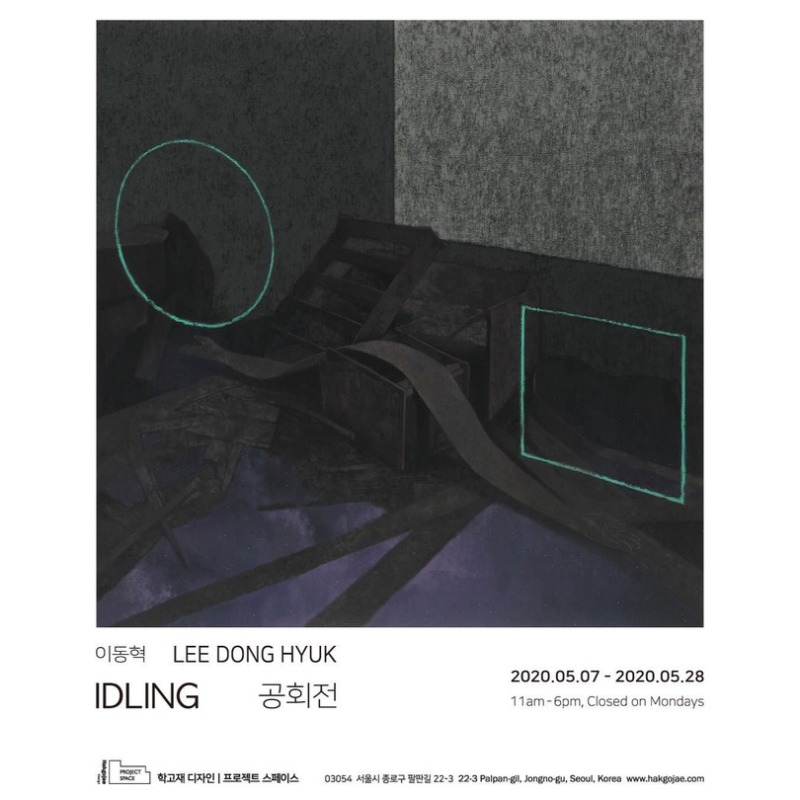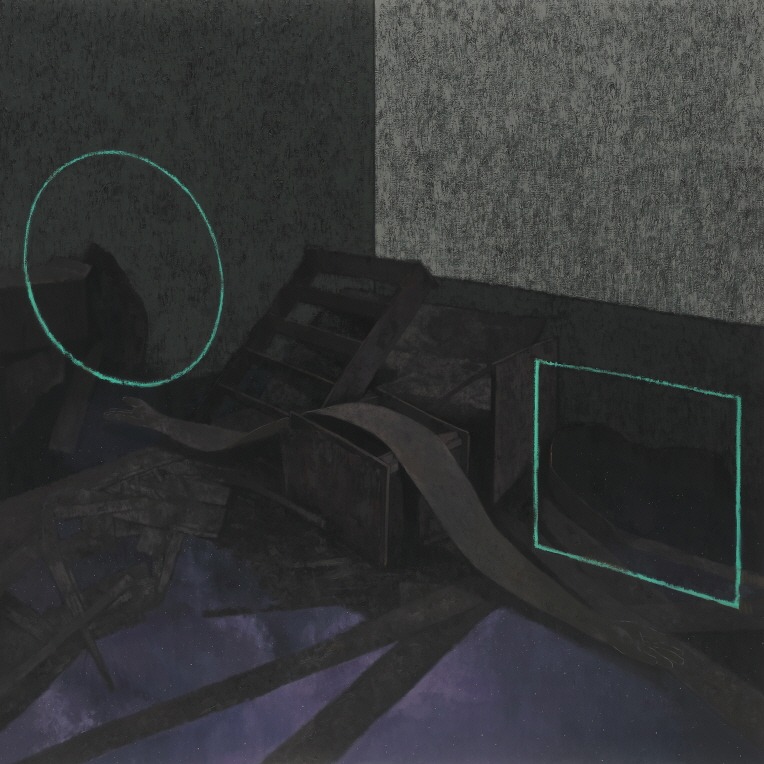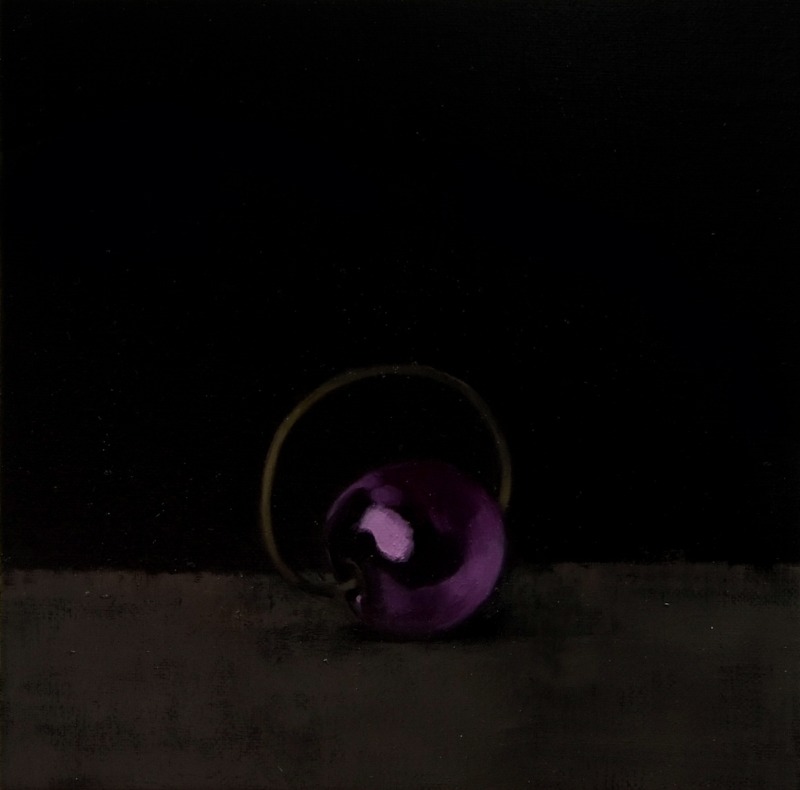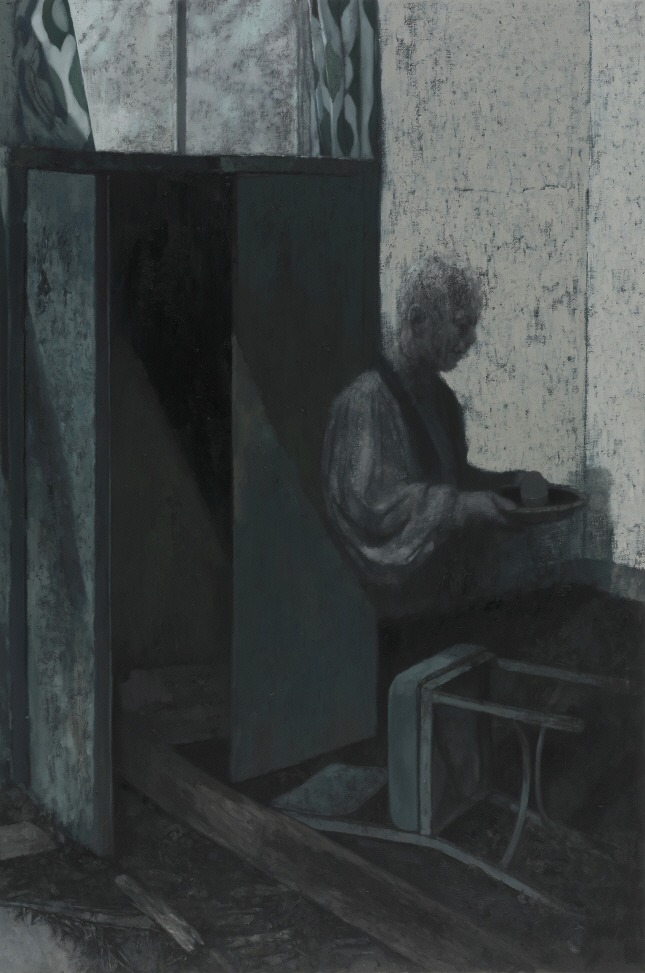
| Period| | 2020.05.07 - 2020.05.28 |
|---|---|
| Operating hours| | 10:00 - 18:00 |
| Space| | Hakgojae Design | PROJECT SPACE /Seoul |
| Address| | 22-3, Palpan-gil, Jongno-gu, Seoul, Republic of Korea |
| Closed| | Mon |
| Price| | Free |
| Phone| | 02-720-1524 |
| Web site| | 홈페이지 바로가기 |
| Artist| |
|
정보수정요청



|
|
Exhibition Information




IDLING: Lingering Iconography Miran Park | Curator at Hakgojae Gallery A desolate scene unfolds. Space engulfs figure. The body’s form becomes entangled with objects or dissipates into the background. Symbolic icons continuously appear on the low saturated, densely depicted picture screen. It is a fragment of the disassembled scene of reality. Lee Dong Hyuk reconstructs scenes to refine his thought; ideas materialize. The subject that penetrates his oeuvre is doubt towards belief, a story about religious blind faith and customs of a group society. To achieve a new perspective, one must question what one already knows; to seek the truth beyond sight. Lee portrays an unknown abandoned church he visited last early summer in his paintings. The debris from the collapsed ceiling is weighty. The wooden plank located in the center of Even in the Heavens 1 (2020) is shaped like bent arms. The circle and rectangle levitating on each end as if on a scale, are each a symbol of the ideal and reality. Luminous stars are shining in where the ground would have been. Perhaps, many would have dreamt of an ideal world on the ground in which the body of reality cannot stand on. A metaphor for infant baptism emerges in For the Sake of O 3 (2019). It depicts a raw egg, split in half, with the more gradual half placed on top of a mirror. In order to transform an oval into a perfect circle, the original form must be cut out during its most delicate state. Then, the viewpoint must be restricted to the appropriate direction: the good-willed violence. Lee’s iconography is descriptive. They are signs that indicate each connoted meaning. They are not symbols used in daily life, but ones mostly used in Christian culture. The elements are familiar to the artist, who was born a Christian and was raised as a religious person. However, not enough clues are provided for the viewers. Iconography, derived from a particular culture, reflects the culture’s customs. They only function within the given context, and when parted, the icon’s meaning becomes vague. Without direction for proper reading, they are read differently depending on one’s perspective. The iconography becomes obscure signs. Iconography lingers like apparitions on the picture screen. The symbols with minimum explanation are like riddles without a correct answer. In the midst of emotions of futility and confusion, the core, which the artist aspires to manifest, finally comes into sight. This is a question about the effectiveness of the principles, believed to be just. Furthermore, a question about the justification of unconditional trust. Lee’s picture screen does not enforce an accurate interpretation. While deferring an answer through an ambiguous explanation, he focuses on the physicality of painting and conveys the sense of the scene itself. This is an attitude of encouraging a proactive judgment rather than implanting morals. Paradoxically, the scenery that does not specify information opens up the potential for a more abundant interpretation. By stepping away from the walls of custom, a completely different perspective may be obtained. The artist, while facing the destroyed church, felt terror and relief at the same time. A shrine without anyone to embrace it is destined to collapse because it is a place for people. What Lee Dong Hyuk represents is not God, but believers, and space and objects of reality. A world in which the absolute being is absent, and the standard between good and evil is complicated—a place where not everyone needs to form a perfect circle. The iconography of ideologies still lingers upon the scenery of reality. Nevertheless, the scope for acceptance and interpretation is open. The desolate scene whispers. Trust must never be blind. Change always starts from doubt. Translated by Yoonsung Cho
